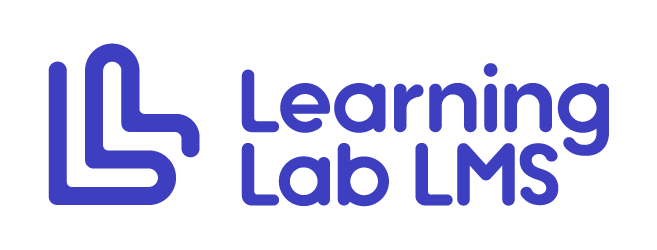Nano & Micro Learning for Mobile Learning
Methodology Nano & Micro Learning for MobileLearning
Developing a tailored strategy for nano and micro-learning within the context of Mobile Learning is crucial in today's fast-paced, information-rich world.
Mobile devices have become ubiquitous, making them a convenient platform for learning on the go.
By designing content in bite-sized, easily digestible modules, learners can efficiently absorb information during short pockets of time.
Integrating engaging activities, such as quizzes, interactive simulations, and multimedia elements, sustains learners' interest and promotes active participation.
This approach not only enhances knowledge retention but also aligns with the natural rhythm of mobile usage, enabling learners to seamlessly integrate learning into their daily routines.
A specific strategy for nano and micro-learning on mobile devices empowers individuals to continually engage with the material they need to remember, fostering effective and adaptable lifelong learning.
Benefits of Audio and Video-based Learning for Mobile Learning
Harnessing the Power of Audio and Video-Based Learning for Mobile Learning
Education is evolving rapidly, and one of the most transformative developments is the integration of audio and video-based learning into the mobile learning landscape. This innovative approach offers a plethora of benefits that enhance the effectiveness and accessibility of education for learners of all ages and backgrounds.
Enhanced Engagement:
Audio and video content have an innate ability to captivate learners' attention. Visuals, sounds, and animations can make complex concepts more understandable and relatable. This heightened engagement translates to better comprehension and retention of information.
Multisensory Learning:
Audio and video-based learning appeal to multiple senses simultaneously. Combining auditory and visual stimuli fosters a deeper understanding of the subject matter. This multisensory approach accommodates different learning styles and ensures a broader audience can benefit from mobile learning.
Flexibility and Convenience:
Mobile learning with audio and video materials offers unparalleled flexibility. Learners can access content at their convenience, whether they're commuting, waiting in line, or relaxing at home. This flexibility empowers individuals to customize their learning schedules to fit their lifestyles.
Real-World Application:
Video-based content can simulate real-world scenarios, making it an ideal tool for teaching practical skills and problem-solving. Learners can watch demonstrations, case studies, or simulations, allowing them to apply knowledge in relevant contexts.
Global Accessibility:
Mobile devices are widespread worldwide, making audio and video-based learning accessible to a global audience. This democratization of education transcends geographical barriers, providing learning opportunities to those who might not have access to traditional educational resources.
Self-Paced Learning:
Audio and video materials are particularly well-suited for self-paced learning. Learners can pause, rewind, and replay content as needed, ensuring they grasp challenging concepts before moving forward.
Increased Retention:
Studies have shown that learners tend to retain information better when it is presented in a multimedia format. Visual cues, animations, and voice narration help reinforce learning and improve long-term memory.
Personalised Learning:
Mobile platforms can leverage data analytics to provide personalised recommendations based on learners' preferences and performance. This tailoring of content ensures that learners receive the most relevant and engaging materials.
Interactivity:
Interactive elements within audio and video content, such as quizzes, polls, and clickable links, promote active engagement. Learners can participate in assessments and discussions, making the learning process more dynamic and collaborative.
Cost-Efficiency:
Compared to traditional classroom-based instruction, audio and video-based learning are often more cost-effective. It reduces the need for physical resources and can be easily updated or modified to reflect the latest information.
Mobile Learning a different Mindset
Mobile learning indeed demands a distinctive mindset from instructional and eLearning designers.
To effectively cater to the mobile learner, it's crucial to think in terms of concise, bite-sized actions and concentrate on presenting one piece of information at a time.
Engagement is paramount, achieved through frequent, small interactive activities that hold the learner's attention.
Given the challenges of reading on mobile devices, a visual-first approach, complemented by clear audio and video elements, takes precedence.
Incorporating questions within courses serves a dual purpose, assessing comprehension while aiding in information retention.
In this mobile-centric learning environment, the focus is on delivering content that is not only informative but also highly accessible, engaging, and conducive to effective learning on the go.
Underline the course objective
In eLearning, it is considered a best practice to provide clear signposts for learners both before and after the course objective.
Beginning with a concise statement of "What the learner will learn in this lesson" sets expectations and focuses the learner's attention.
This not only primes them for the upcoming content but also helps establish relevance.
On the flip side, summarising what has been learned at the end of the lesson reinforces key takeaways. To solidify understanding and gauge knowledge retention, incorporating a brief question or quiz is highly effective.
This approach not only serves as a review but also encourages active engagement, ensuring that learners leave the course with a strong grasp of the material.
Mobile Learning: Space for repetition
Creating space for repetition in the learning process is paramount, as the brain is naturally inclined to forget information over time.
Repetition is the key to reinforcing memory and ensuring that knowledge is retained.
Short memorisation exercises serve as valuable refreshers, allowing learners to revisit and solidify essential information.
By strategically returning to important concepts multiple times throughout a course, instructional designers enable learners to encode and store information in their long-term memory effectively, resulting in more enduring and meaningful learning outcomes.
Learning Lab for Nano and MicroLearning & MLearning
Introducing The Learning Lab's White Label LMS: Your Customisable Learning Platform
The Learning Lab proudly presents its White Label LMS, an innovative web-based learning platform that takes customization to the next level. Our user-friendly interface and visually appealing design templates enable Creative Brands to build and host premium-looking LMS without any coding or design expertise.
No-Code LMS for Ultimate Branding and Design Control
The Learning Lab LMS is a groundbreaking No-Code Learning Platform, designed to empower educators and organizations with effortless brand integration, design flexibility, and content management. Craft and manage online learning experiences with unprecedented ease.
Revolutionary Authoring Tool
Elevating online course creation and management, our solution boasts an advanced authoring tool. It offers extensive customization options for both learning content and the LMS & LXP interface itself, giving you full creative control.
More Than Just an LMS
At its core, The Learning Lab is not just a Learning Management System; it serves as the foundation for crafting your unique learning platform. This goes beyond adopting a pre-existing solution; it's about creating an educational environment that is truly yours.
Branded Mobile Application
Extend your brand's reach with our white-label mobile application. Offering a seamless on-the-go learning experience under your own brand name, the app mirrors the same level of customization and branding available on The Learning Lab's web platform.
Experience the power of full customization and branding with The Learning Lab's White Label LMS.
In conclusion, nano and micro-learning concepts are indispensable in the realm of mobile learning.
These bite-sized, easily digestible modules cater to the mobile learner's preferences and constraints, providing flexibility, engagement, and accessibility.
By delivering content in small, focused doses and incorporating interactive elements, mobile learning can be more effective in promoting understanding and retention of information.
Integrating multimedia elements and repetitive reinforcement strategies enhances the overall learning experience, making nano and micro learning a powerful tool in the mobile learning landscape.
As technology continues to advance, embracing these strategies will be crucial in creating engaging and effective mobile learning experiences that cater to the needs of modern learners.






